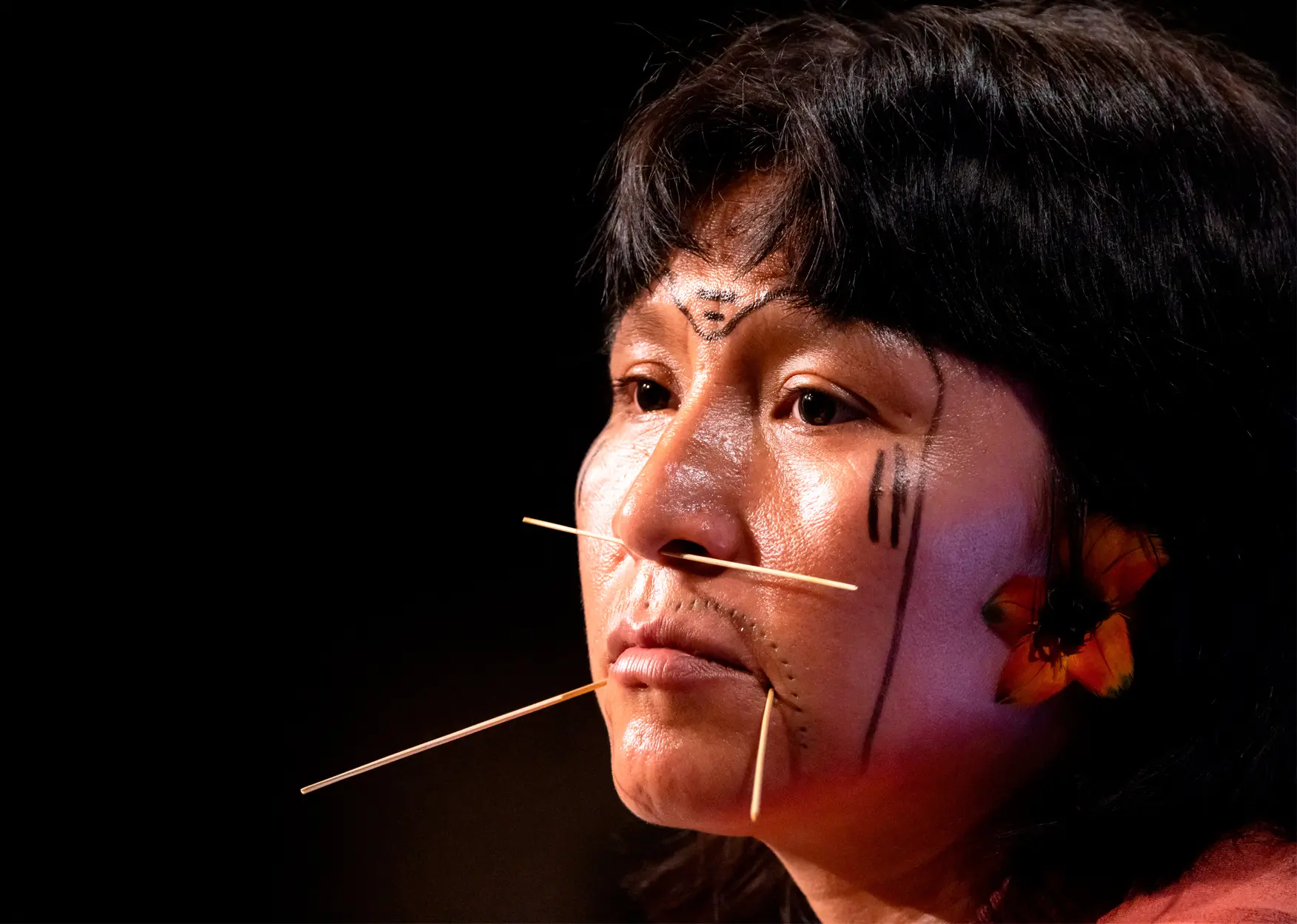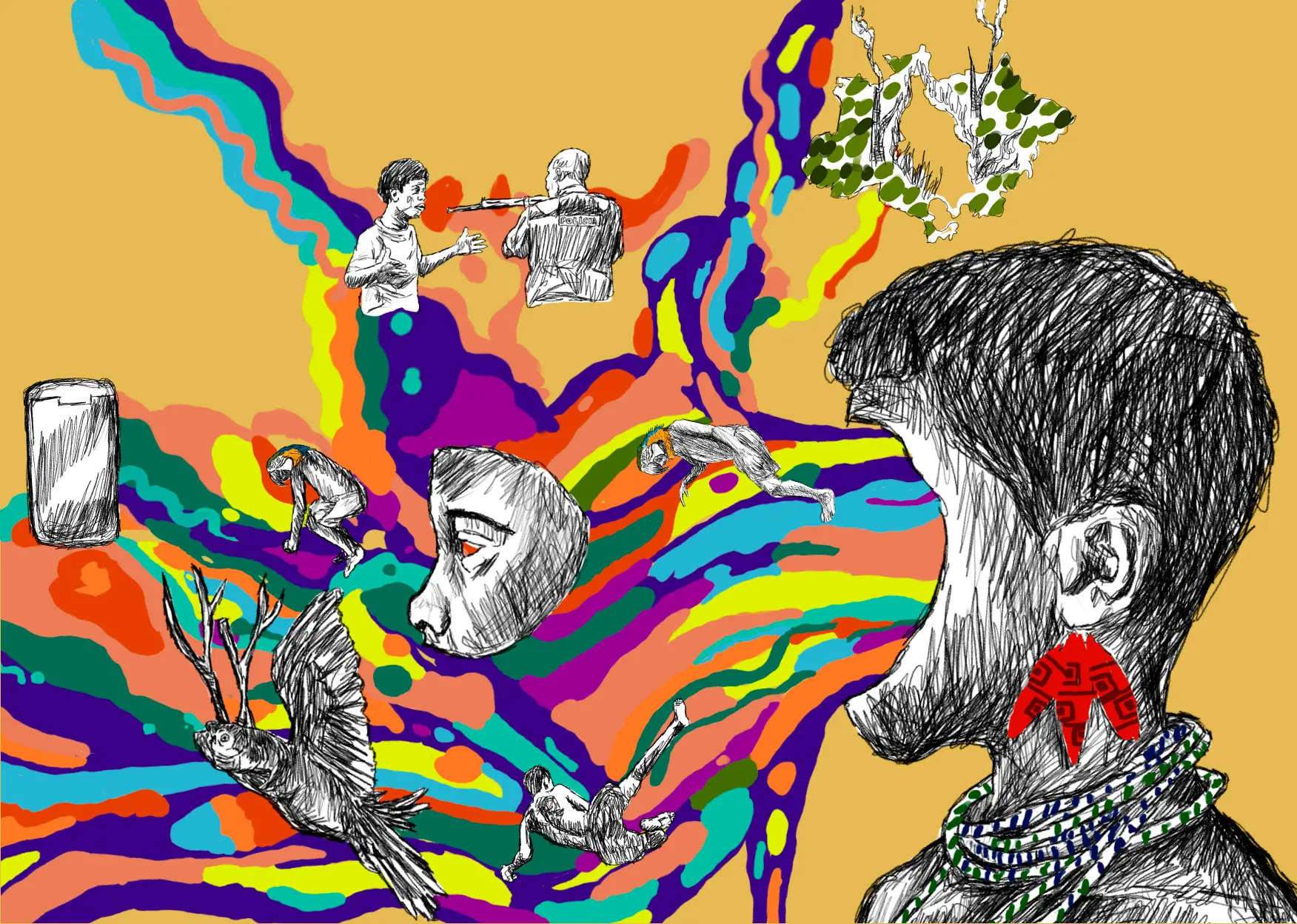On the Swedish island of Runmarö, there is a man named Fredrik Sjöberg who is often seen with a net in one hand and an exhaustor, a device for sucking up flies, in the other. When the 65-year-old spots a syrphid, or hoverfly —those are the only flies he’s interested in— he puts the cylindrical tube in his mouth, slowly approaches the insect and sucks in hard. If the operation is successful, the fly passes into the tube. And, if Sjöberg thinks it is suitable for his study, the bug will perish shortly afterwards in cyanide fumes.
“This can be a contentious issue.”
“The best answer to the question of why I collect hoverflies,” says Sjöberg, “is that I want to understand the fine print of the only language that has been mine for as long as I can remember.”
He is referring to the ‘natural’ language that he speaks with all the elements of his island of approximately fifteen square kilometers. The language that has enabled him to learn that the conspicuous absence of the Parnassius apollo butterfly is due to the increasing acidification of the earth in Runmarö. It seems that by hunting flies, Sjöberg finds information that doesn’t make the news.
In the eyes of the conventional world, Sjöberg is an odd man who does odd things on a small, remote island in Sweden, where he lives with his family. He also loves literature and has written books on the history of the environmental movement and on the insect collection of a Nobel Prize-winning poet friend.
In 2004, he published his book Flugfällan, which would be translated into English ten years later under the title The Fly Trap, by Thomas Teal. The Spanish edition arrived in 2023 under the title El Arte de Coleccionar Moscas (The Art of Collecting Flies). The book details how René Malaise – another Swede – devised a fly trap that is highly esteemed in the industry. Sjöberg explores Malaise’s biography while also talking about, for example, a couple of university students who, after falling in love, set out to find flies together, or about a researcher who determines the frequency of a fly’s wing movements by listening to its buzzing sound.
And, above all, he gives a portrayal of life on the island from an unusual perspective, pointing out that there are 4,424 species of flies in Sweden, 368 of them syrphidae, and that 202 of this family of dipterans live on Runmarö. These 202 are the ones he works with.
Read the main excerpts from the interview. The conversation was carried out by email.
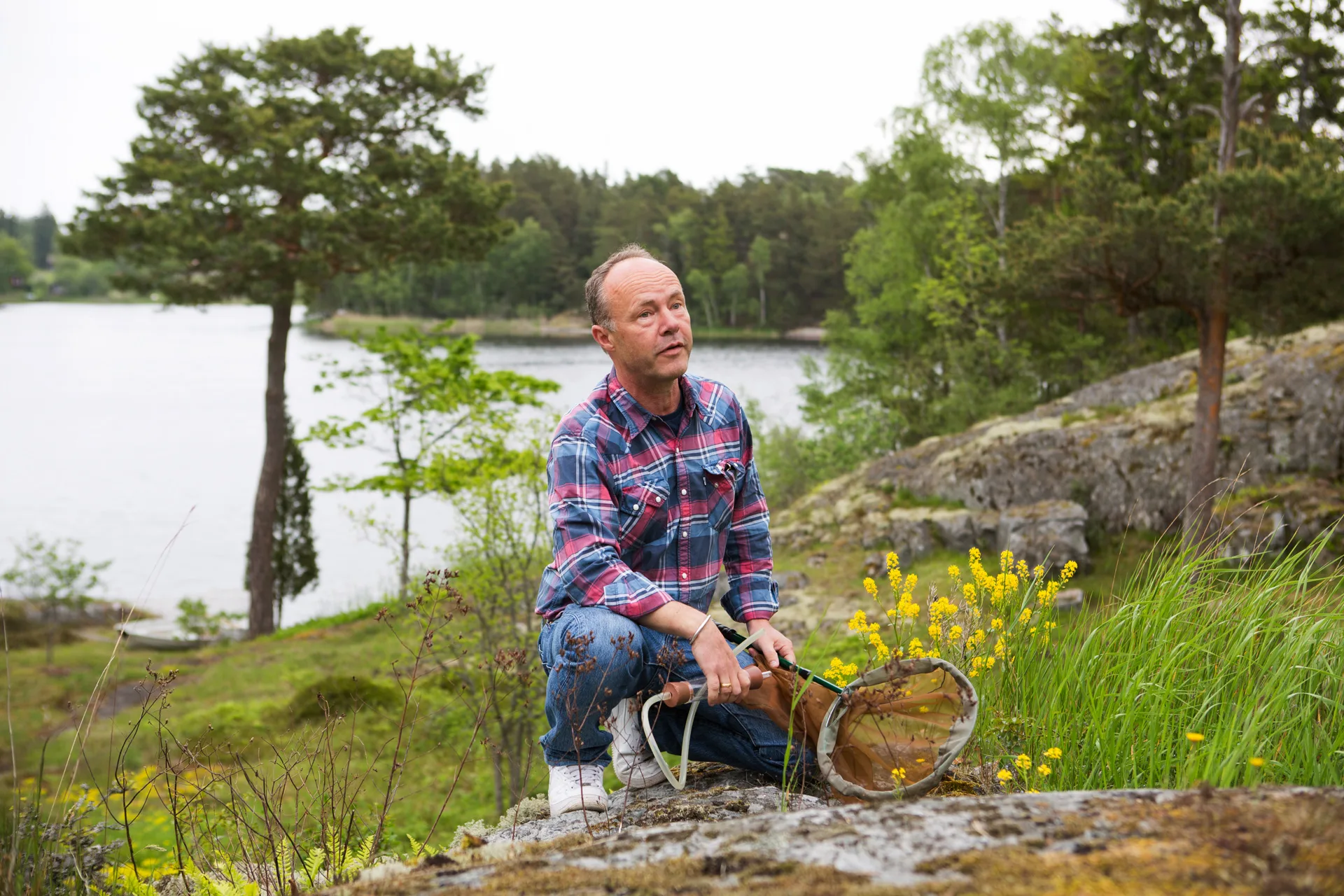
Fredrik Sjöberg with his insect trap. Collecting flies, says the author, is a ‘love story’ and a ‘never-ending story’. Photo: Árni Torfason
LiterNatura: The Fly Trap has been translated into Spanish by Marc Jiménez y Petronella Zetterlund with the title: El arte de coleccionar moscas [The Art of Collecting Flies]. The worst thing for a collector is completing their collection, but on Runmarö there are new flies every year. Is your collection infinite?
Fredrik Sjöberg: Yes, a neverending story. Thank God!
(“The unknown grows at the same rate as knowledge,” writes Sjöberg, who answers the questions with the brevity of a poet or a fly, so short-lived).
When did you first have the idea to write a book about flies? Who were your role models?
The idea came up around 2001, when I wrote a little book about my friend, the poet Tomas Tranströmer, and his long since forgotten insect collection from the same island where I live. The Fly Trap is actually an autobiography. It’s all about me and my life here on the island.
You talk about how difficult it is to convey a passion for flies to readers. Why do you think it is generally so difficult to find books about nature to read? Not to mention insects…
Most books about nature are written for children and idiots, so yes, it’s a tricky business. Many readers don’t expect real literature. And almost none of them are fond of insects. But I said to myself: if they don’t like it, I don’t care (which I of course did).
You say that all entomologists start when they are children. How did you get hooked on flies? How has the attraction to them changed over the years?
Not even my 99-year-old mother can say why I started collecting insects. Something genetic, I guess. The attraction is identical now, when I’m 65. Today I’ve been running around in my garden with my net, like a little boy. Great fun.
You note that Bruce Chatwin became interested in insects at the age of fifteen after a stay in Södermanland, an episode that is rarely mentioned in his biographies. He himself says that he left Sweden knowing what he wanted to do with his life. It is strange that so little has been mentioned about such an important moment in his life story. Why do you think that is?
Well, Sweden is far away from England, and those who wrote about his life weren’t entomologists. I was lucky to find the story.
In addition to Chatwin, you cite Kundera, D.H. Lawrence, Peter Noll… Do flycatchers read a lot? Don’t flies disturb your reading?
Fly collecting on sunny days, reading on cloudy. Often cloudy up here. And the winter! You need books.
Which physical senses – hearing, sight… have you sharpened the most while hunting flies? Is it true that you can identify a fly by its buzzing sound?
Eyesight, I would say. And patience, but that’s not physical.
What do you think a fly represents to most humans and what does it mean to you?
Normal humans see them as annoying. A total waste of space. For me they mean adventure and escape (from the fact that life is short).
What is your life as a flycatcher like?
It is a haven and I love it.
Much has been written about the ways to stalk an animal: for birds; for snow leopards; for whales. But very little about stalking flies. How do you stalk a fly?
Among flowers, in sunny weather, and with a clear head.
You describe René Malaise as someone who wanted to break new ground, willing to stalk flies at a time when that was even rarer. A pioneer. You yourself wonder how you managed not to descend into madness. What is the answer?
Well, maybe he ended up a bit mad, but I think he was happy. He had a vivid imagination, and he believed in himself.
In the book, Sjöberg adds that Malaise was never bitterly mocked or belittled for the work he did, thanks in large part to his good humor.
The Malaise fly trap uses the phototropism and negative geotropism of the insects so that, once inside, they don’t know how to get out. Its amazing effectiveness has helped people like you enormously. Do you still use it?t?
Oh, yes! The trap is my best friend. You should try it. Life is never boring with one of those!
Besides your beloved Runmarö, where is the Mecca of flies for an entomologist?
My garden is Mecca, period. Fly enthusiasts show up now and then, often from far away.
You talk about the health of some Swedish flies, but what is the current state of flies in the rest of the world? Is their number increasing, stable, or decreasing? Why?
In Central Europe many hoverfly species are dwindling due to the industrialized landscape. I don’t know much about the rest of the world.
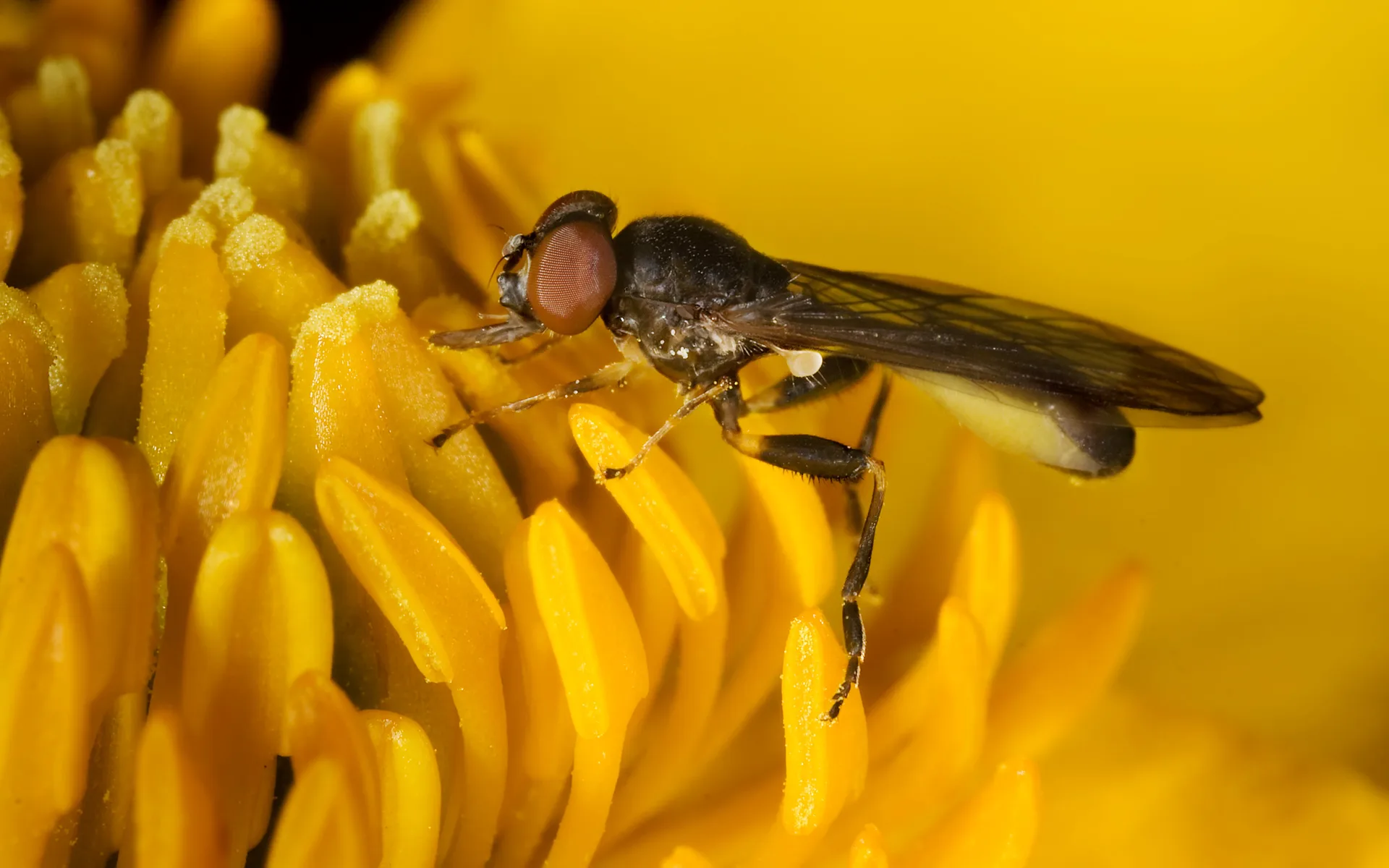
Sirfídeo raro que habita o centro e o norte da Europa. ‘Para mim, as moscas significam aventura e fuga do fato de que a vida é curta’. Foto: Richard Bartz/Wikimedia Commons
A few months ago I interviewed Patrik Svensson about his book The Gospel of the Eels, in which, with literary brilliance, he explores the reality of teleosts. .What do you think about the fact that more and more stories about eels or flies are coming out of Sweden, as well as many crime fiction novels?
The crime novel era will soon be over. Now is the time for flies (and some eels). Of course we have many crimes, but at the bottom of their souls, all Swedes are nature lovers.
You write that, “of all the European countries, none is as separate and self-centered as our Nordic peninsula…. The Scandinavian must fend for himself.” Do you feel isolated from the rest of Europe?
We are closer today than 20 years ago, when I wrote the book, but our corner of the world is still a bit peculiar. Partly, it’s because of our climate and landscape.
You also point out that many people seriously interested in insects have a common desire to escape? What are they escaping from?
We are all escaping from ourselves. And family life, of course.
There aren’t many people to speak to in your field of research. What are the other fly specialists like? And hoverfly experts in particular?
Odd people, slightly in their own world, but honest, all of them.
The island is also a protagonist. You say that the islands are places conducive to matriarchy.
The men of the islands go off to sea. That’s why the women rule.
Limitations make you feel good. Can you give any other examples of a happy limitation, apart from living on a small island?
Short boat trips. Non modernist poetry. Whatever life I have left. Etcetera.
The book achieves a tone that is very charming, wry and at the same time almost sensual. At times it’s funny. Lately it is not usual to read such ‘upbeat’ books about nature. How do you remember your experience of writing the book? Were you happy, tense about the writing…?
I hate writing. Never liked it. I wrote The Fly Trap: A Memoir in 100 days non stop, completely frantic in a small apartment in downtown Stockholm.
In the debate on whether nature books should focus more on beauty or denunciation, it would seem that you opt for beauty.
Biodiversity means nothing to most people; beauty is a matter for all. It’s about democracy.
You show that in your environment, flies used to represent poverty and now they are synonymous with love. The idea of love comes up at other times too. Can we say that this is a book about love?
Yes, it’s a love story. So is your question.
Do you miss the geographical explorations? Has the thirst for adventure replaced the desire for knowledge?
Yes. Adventure is now a goal in itself. Quite poor, I would say.
Sarracenia, a naturalized exotic plant that catches flies, sparks what you call biological xenophobia. You claim that this type of xenophobia is widespread. But the truth is that humans are planting more and more exotic species in their forests, gardens…
Of course, alien species are a problem. I know. But the debate is often hysterical. Globalization comes at a price. Sometimes it’s worth paying, sometimes not. Runmarö is not Madagascar.
How is climate change affecting Runmarö and the flies?
Climate change affects everyone, everywhere. Here it’s not a big problem and will not be, I guess.
In The Fly Trap, Sjöberg also records episodes of summer nights outdoors, although the flies vanish after dark, because his desire is to convey the grandeur of the space he inhabits with the insects. Summer nights “are our most untapped natural resource”, says the entomologist, as he wanders along the edges of the woods and meadows that mark the border between fly and non-fly territories.
“How would you define the art of fly-catching,” he has been asked on more than one occasion. “As a way of exercising slowness,” he sometimes replies. “But next summer I will probably say that for me fly-catching is a way of exercising concentration. A focus so intense that I forget myself. The latter is not always so easy on the dance floor that is the world we’re living in.”
And you said it is also your way of talking to nature…
The landscape is a story, the species are the words. Ecology and all these environmental narratives are grammar. Biodiversity is my second language.
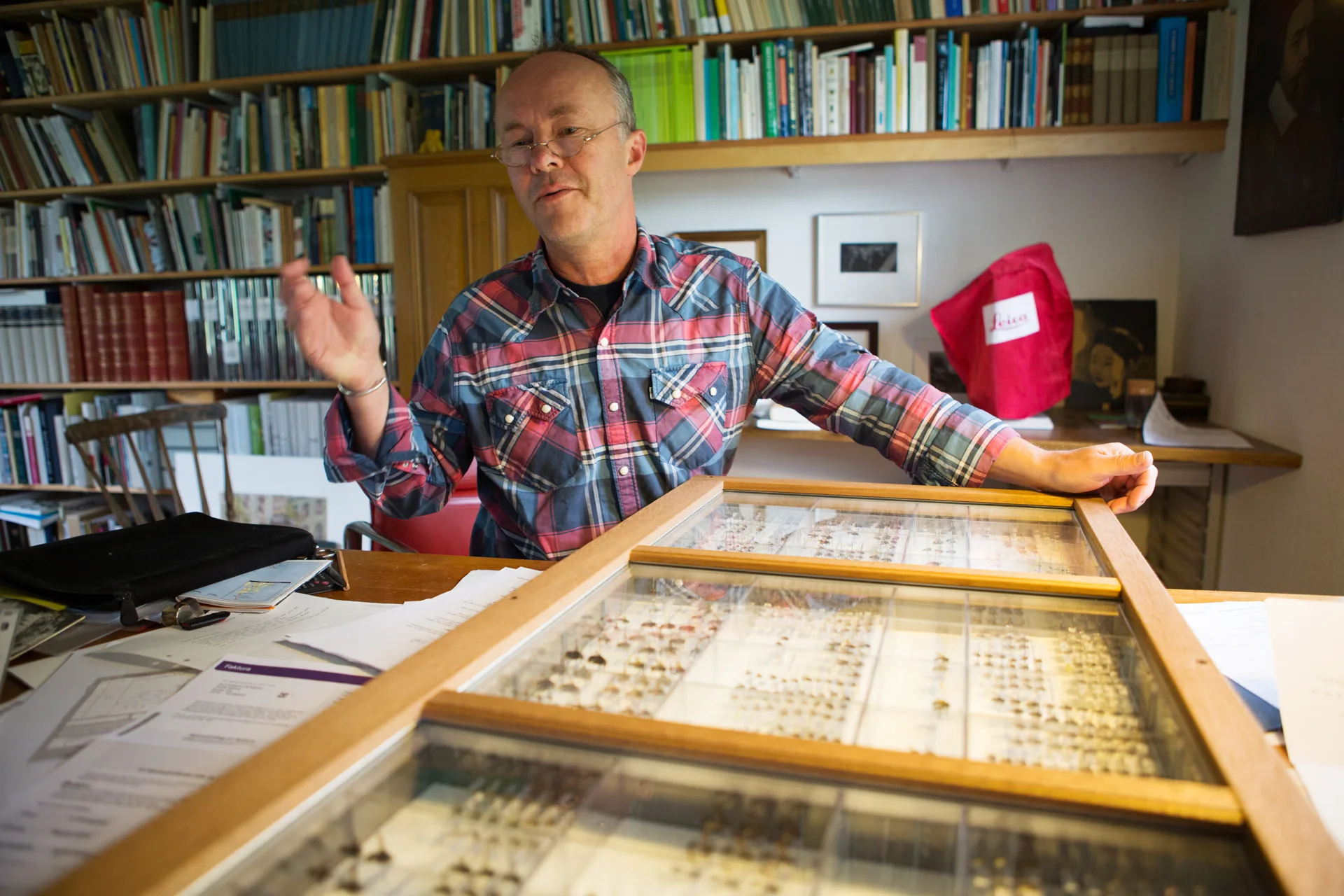
Collecting insects requires so much concentration that the entomologist forgets himself. Maintaining concentration is not easy ‘on this dance floor that is our time’. Photo: Árni Torfason
Gabi Martínez has written about deserts, rivers, seas, mountains, deltas and all kinds of living beings. He spent a year living with shepherds in Spain’s wooded pasturelands, and another on the island of Buda, in the last house before the sea, which will be the first to be engulfed by the waters in the coming years. After these experiences he wrote Un cambio de verdad [A True Change] and Delta. He has written 16 books and his work has been translated into ten languages. He is the driving force behind the Liternatura project, a founding member of the Caravana Negra and Lagarta Fernández Associations; of the Urban and Territorial Ecology Foundation; and co-director of the Animales Invisibles [Invisible Animals] project. In SUMAÚMA he writes for the LiterNatura space.
Report and Text: Gabi Martínez
Editing: Viviane Zandonadi
With the collaboration of: Meritxell Almarza (Spanish)
Photo editor: Lela Beltrão
Fact-checker: Plínio Lopes
Proofreader (Portuguese): Valquíria Della Pozza
Portuguese translation: Paulo Migliacci
English translation: Charlotte Coombe
Copyediting and finishing: Natália Chagas
Editorial workflow: Viviane Zandonadi
Editor-in-chief: Talita Bedinelli
Editorial director: Eliane Brum

